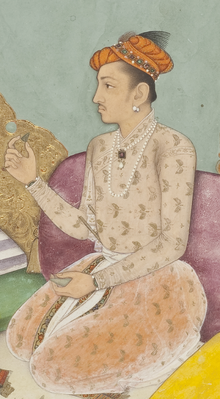Draft:Jai Singh's attack on Bijapur
 | Draft article not currently submitted for review.
This is a draft Articles for creation (AfC) submission. It is not currently pending review. While there are no deadlines, abandoned drafts may be deleted after six months. To edit the draft click on the "Edit" tab at the top of the window. To be accepted, a draft should:
It is strongly discouraged to write about yourself, your business or employer. If you do so, you must declare it. Where to get help
How to improve a draft
You can also browse Wikipedia:Featured articles and Wikipedia:Good articles to find examples of Wikipedia's best writing on topics similar to your proposed article. Improving your odds of a speedy review To improve your odds of a faster review, tag your draft with relevant WikiProject tags using the button below. This will let reviewers know a new draft has been submitted in their area of interest. For instance, if you wrote about a female astronomer, you would want to add the Biography, Astronomy, and Women scientists tags. Editor resources
Last edited by JJMC89 bot III (talk | contribs) 4 months ago. (Update) |
This article has multiple issues. Please help improve it or discuss these issues on the talk page. (Learn how and when to remove these messages)
|
| Jai Singh's attack on Bijapur (1665-66) | |||||||
|---|---|---|---|---|---|---|---|
| Part of the Mughal–Bijapur Wars | |||||||
 Jai Singh I a strong Mughal Commander | |||||||
| |||||||
| Belligerents | |||||||
|
|
Bijapur Sultanate ( Adil Shahi Dynasty ) Supported by | ||||||
| Commanders and leaders | |||||||
|
Jai Singh I Shivaji[Note 1] | Rataji Mane | ||||||
| Strength | |||||||
|
49000 11,000 Marathas | 30000 | ||||||
Mughal Commander Jai Singh Invaded Bijapur on orders of Aurangzeb where he met failure as he was repulsed by Rataji Mane a Maratha commander under Bijapur.[1][2][4]
Background
[edit]After the Mughals emerged victorious against Shivaji in the Battle of Purandar, Shivaji came to the realization that he could not defend Purandar or expel the Mughals from his territory. Consequently, he surrendered. Under the terms of the treaty of Purandar, Shivaji relinquished twenty-three of his fortresses and the lands they controlled to the empire, while retaining twelve fortresses and their lands as his domain. He became a vassal of the Mughal emperor, paying tribute, but was exempted from personal service as a mansabdar. Instead, his young son, Sambhaji, was granted the rank of 5,000 zat and would be sent to the imperial court. Additionally, Shivaji agreed to lead his troops as part of the Mughal force expected to invade Bijapur, with the promise of receiving additional lands seized from Bijapur in return. Shivaji thus surrendered his independence and entered the imperial system as a chief, or, in imperial terminology, a zamindar, following the fate of many powerful regional chiefs and kings before him.[5]
Aftermath
[edit]Saya Khan, commander, pleased with Rataji Mane in repulsing the attack of Jai Singh on Bijapur, recommended to Ali Adil Shah II [sultan of Bijapur] that the deshmukhi watan of Kasbe Kaladhon be granted to Rataji Mane. While Jai Singh fled towards Bhopal.[1][6][citation needed]
See also
[edit]References
[edit]
- ^ a b c New Cambridge History of India. The Marathas - Cambridge History of India (Vol. 2, Part 4). p. 28.
- ^ a b SETHUMADHAVRAO S. PAGADI. SHIVAJI - ENG - SETHUMADHAVRAO S. PAGADI. p. 54.
- ^ Richards 1993, p. 210.
- ^ Barnett, Richard B. (2002). Rethinking Early Modern India. Manohar Publishers & Distributors. p. 159. ISBN 978-81-7304-308-6.
- ^ Richards, John F. (1993). The Mughal Empire. Cambridge University Press. p. 210. ISBN 978-0-521-56603-2.
Between mid-November, 1665 and February, 1666, Shivaji, with 11,000 troops, accompanied Jai Singh during the abortive Mughal campaign into Bijapur.
- ^ Shrivastavya, Vidayanand Swami (1952). Elements Amongst the Marathas. D.K. Shrivastavya for Aitihasik gaurava grantha mala. p. 203.
